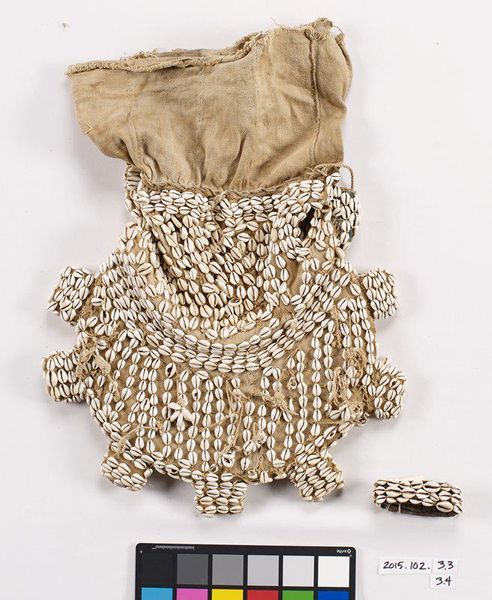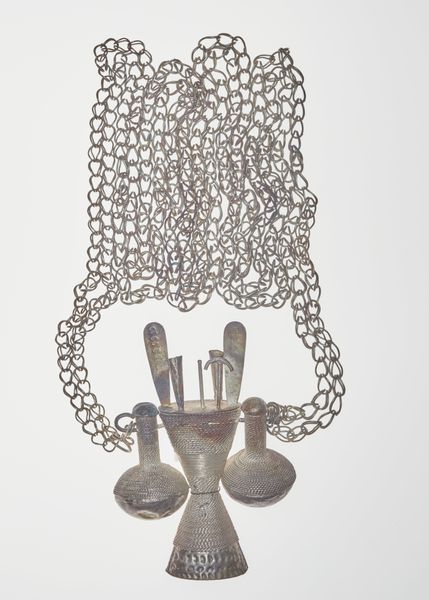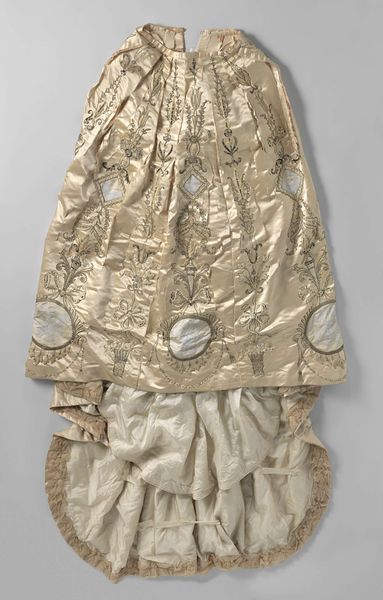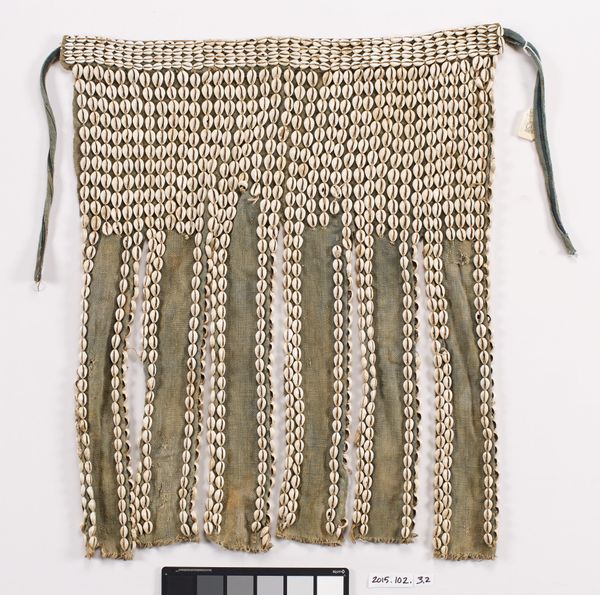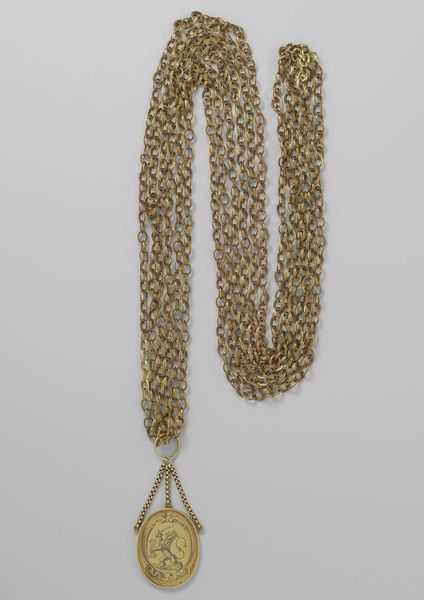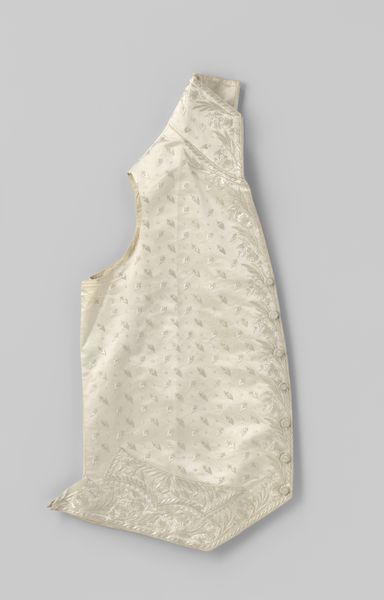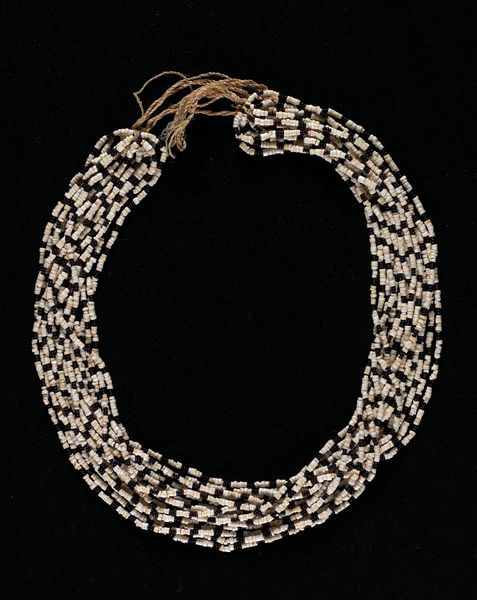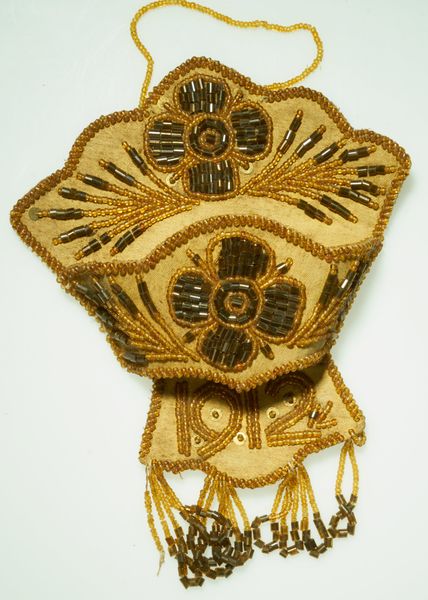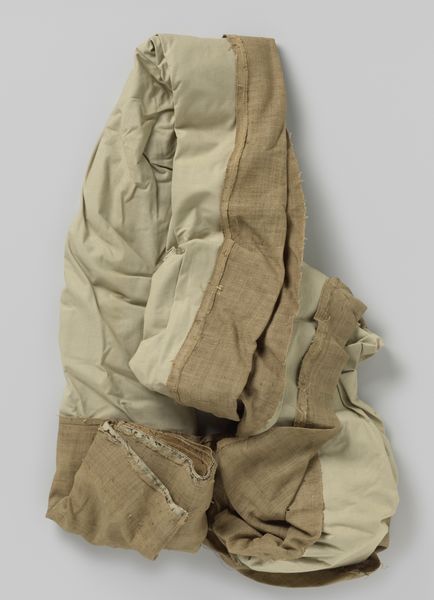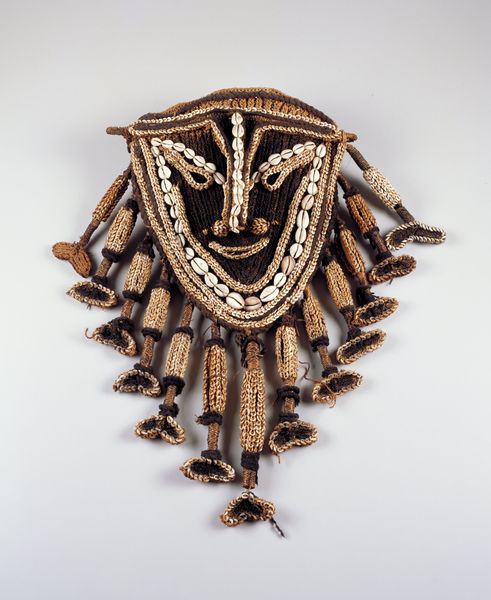
mixed-media, assemblage, textile, cotton
#
african-art
#
mixed-media
#
assemblage
#
decorative
#
textile
#
cotton
Dimensions: 1 1/2 x 3 x 4 1/2 in. (3.81 x 7.62 x 11.43 cm)
Copyright: No Known Copyright
Curator: Looking at this Ceremonial bracelet, presently held here at the Minneapolis Institute of Art, one immediately notices the extensive use of cowrie shells and what appears to be a cotton textile base. Its creation context is unknown but attributed to the Bobo people, inviting speculation on its purpose. Editor: My initial feeling is of fragility and labor. The piece's neutral tones give it a somewhat subdued feel, even with the dazzling array of shells, yet the deliberate arrangement evokes tremendous cultural depth. What purposes did these materials typically serve in Bobo culture? Curator: Cowrie shells, of course, were often used as currency, as well as adornment, signifying wealth, power, and spirituality. Cotton also holds cultural importance as one of the prevalent fibers across Bobo textiles. It might speak to both ritualistic and economic narratives within the community. Considering the nature of African Art in particular, we also can't separate this object from its inherent value within colonization. The use of this artwork and what these objects become because of their commodification really speak to intersectionality. Editor: Right, seeing it in a museum context makes me consider that relationship acutely. Could this piece, through its very presence here, serve as a focal point for discussing global economies, legacies of colonialism, and even the role of museums themselves as cultural gatekeepers? Curator: Absolutely. And further still, objects such as these ceremonial bracelets speak to gendered power. As adornment that communicates belonging and success within the community, it offers us insight into cultural perceptions of selfhood in Bobo culture. Given its display in the museum context, does it carry its original spiritual or economic authority, or is it something wholly other? Editor: Perhaps it has transformed into a symbol prompting dialogue. The bracelet, even detached from its precise origins, invites conversations around cultural heritage, material value, and the responsibility institutions bear when showcasing these artifacts. It feels very appropriate to consider such a dialogue. Curator: Indeed, its mere presence sparks necessary conversations about the intricate ways value, identity, and history intertwine across global societies, a sentiment worth considering long after we walk away.
Comments
No comments
Be the first to comment and join the conversation on the ultimate creative platform.
